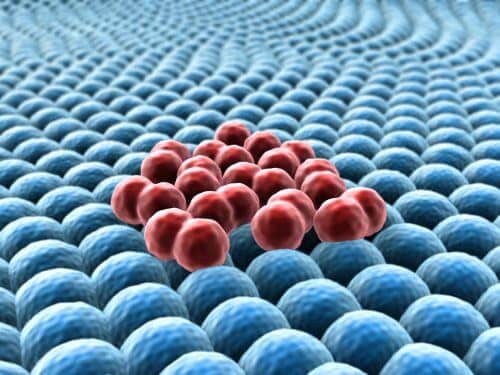Cancer cannot multiply and invade at the same time/Vivian Callier

The article is published with the approval of Scientific American Israel and the Ort Israel network
The worst cancer cells are those that do not remain silent but metastasize, meaning they migrate from their original place of residence and establish new tumors in other parts of the body. And once the cancer has spread, it is harder to eradicate. Research by developmental biologists provides new clues to how cancer cells acquire the ability to invade other tissues, a prerequisite for producing metastases. The research shows that in order to invade the tissues, the cells have to stop dividing. Because of this, the two processes, invasion and culture, cannot exist at the same time. This finding may have implications for cancer treatment, which usually focuses on rapidly dividing cancer cells.
David Maytes from Stony Brook University andDavid Sherwood Duke University chose to study a transparent worm to understand the tissue invasion process. During the normal development of the worm, a cell known as an anchor cell breaks through the structure called the basement membrane, which previously separates the uterus from the genital organ. The process is similar to how cancer cells in humans invade through basement membranes to enter the bloodstream carrying them to distant areas. For this reason, biologists have adopted this worm, Caenorhabditis elegans, as a model for creating metastases, in which simulations and genetic changes can be easily performed.
After turning off or turning on hundreds of genes in the worm, Mates' team members discovered a gene that regulates anchor cell invasion. When this gene was silenced, the anchor cell was unable to invade through the basement membrane. But the anchor cell also did something unexpected: it began to divide. Alternatively, when the researchers inhibited cell division, the anchor cell stopped dividing and began to invade again. Further experiments showed that inhibition of cell division is necessary and sufficient for invasion. Although chance observations by pathologists have hinted that these are indeed two conditions that do not exist simultaneously, the new study is the first to reveal the genetic mechanism for it. the results Were published In October 2015 in the journal Developmental Cell.
The study also explains why the invasion front of cancer tumors does not contain dividing cells, a phenomenon that cancer researchers have noticed for a long time but remained unknown until now. The invading cells lead the dividing cells behind them, pushing into healthy tissue as the cancer grows. "On some level, this research is changing the way we think about cancer," says Mates. "Cancer has so far been considered a disease in which the cells divide uncontrollably, and indeed many anti-cancer drugs are designed to attack the dividing cells. But our research suggests that we need to understand how to target non-dividing cells as well, because they are the invasive cells."
However, before the new insight makes its way into cancer treatments, more trials will be needed. "Now we can take this simple model system and move to more complex systems, like breast cancer tumors," says Andrew Ewald, a cancer cell biologist at Johns Hopkins University. Metastatic breast cancer is responsible for about 40,000 deaths each year in the US, but the five-year survival rate is nearly 100% if the cancer is caught before it spreads.
